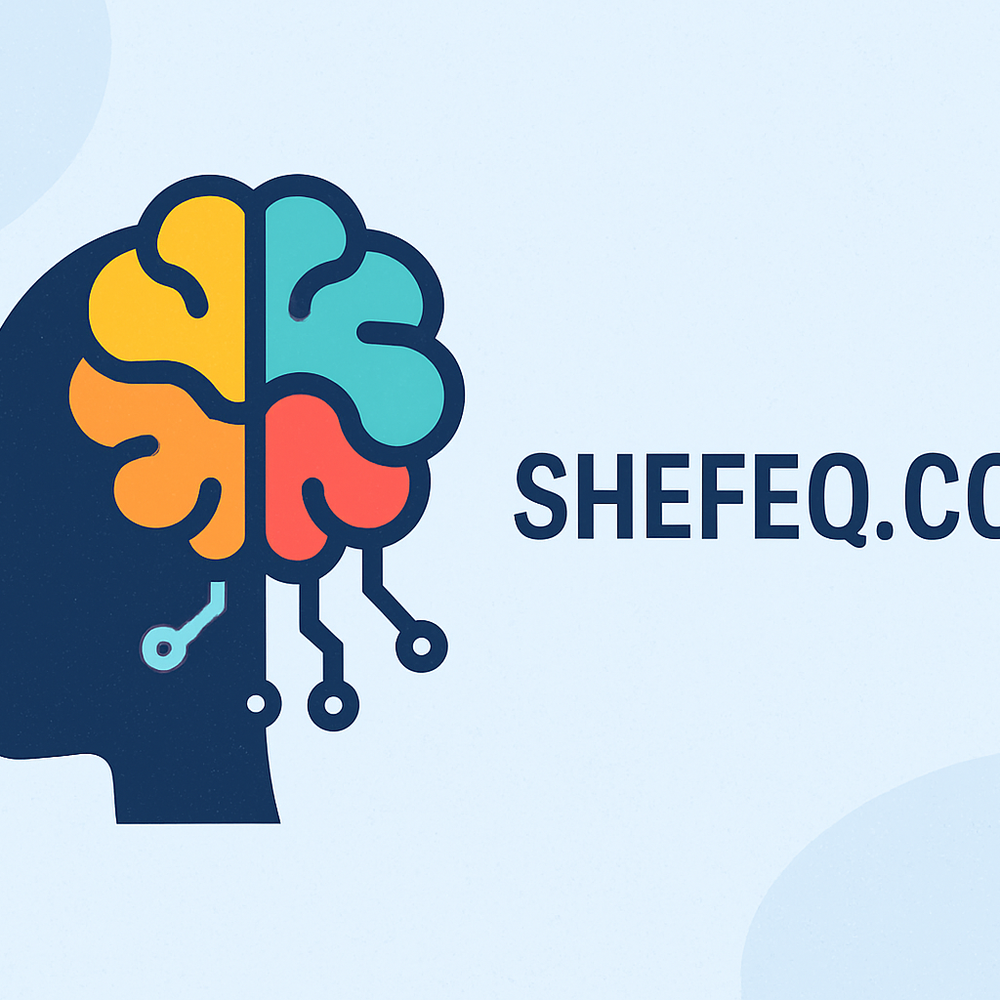INTRODUCTION Artificial Intelligence – these two words no longer represent the future; they define the present. AI influences not only our technological tools but also our way of thinking and decision-making models. What we call intelligence is no longer limited to the human brain – today’s so-called “new face of intelligence” is opening the doors to a new era for humanity.
In this article, we will extensively explore the types of artificial intelligence, their names, application areas, and how they are related to the future.
I. ORIGINS AND BRIEF HISTORY OF AI The concept of Artificial Intelligence (AI) was officially introduced to the scientific world at the Dartmouth Conference in 1956. The goal at that time was to enable computers to think like humans.
Early Steps:
-
Alan Turing's question: "Can machines think?"
-
ELIZA (1966) – one of the first conversational computer programs.
-
Expert Systems (1970–1980) – systems based on human experts' knowledge bases.
-
Boom stage with the development of deep learning and neural networks after the 2000s.
II. TYPES OF ARTIFICIAL INTELLIGENCE AI is generally classified into three main categories:
-
Narrow AI (ANI – Artificial Narrow Intelligence) This type of AI is designed to perform only one specific task.
Examples:
-
Voice assistants like Siri and Alexa
-
Google Translate
-
Facial recognition systems
-
Spam filters
-
General AI (AGI – Artificial General Intelligence) AI capable of human-level thinking and multifunctionality. Currently in the research phase and not yet realized.
Features:
-
Can learn across different domains
-
Can create new knowledge
-
Has emotional and social capabilities
-
Super AI (ASI – Artificial Super Intelligence) A hypothetical type of AI that surpasses humans in all aspects. Frequently featured in science fiction, but not yet existent in reality.
Potential Capabilities:
-
Scientific discoveries
-
Optimization of humanity's problems
-
However, high risks of control and ethics
III. SUBTYPES AND MECHANISMS OF AI
-
Machine Learning A core direction of AI where computers learn from data and make decisions based on past experiences.
Subtypes:
-
Supervised learning
-
Unsupervised learning
-
Reinforcement learning
-
Deep Learning Operates via artificial neural networks that mimic the structure of the human brain. Used in voice recognition, image analysis, and machine translation.
Examples:
-
GPT-4 and GPT-5 (OpenAI)
-
BERT (Google)
-
DALL·E (image generation)
-
Natural Language Processing (NLP) The ability to understand, analyze, and generate human language. Models like ChatGPT are products of this field.
IV. MOST POPULAR AI NAMES In the world of AI, “branded intelligence” names have emerged. Here are some of the most well-known systems:
-
OpenAI – ChatGPT, GPT-4, GPT-5 Writes text, answers questions, writes code, creates poetry. One of the most famous AI platforms in the world.
-
Google DeepMind – Gemini, AlphaGo, AlphaZero
-
AlphaGo defeated humans in the game of Go.
-
Gemini works with multimodal models.
-
Anthropic – Claude An AI system built with strong ethical principles. Alternative and security-focused AI experience.
-
Meta (Facebook) – LLaMA, Galactica Provides services in scientific knowledge, social media moderation, and language models with open-source AI models.
-
Mistral AI A powerful European open-source AI model.
-
X.AI – Grok (Elon Musk project) An AI integrated into the Twitter (X) platform. Emotional and social analysis capabilities are being developed.
V. APPLICATION AREAS OF AI AI is now applied in almost all areas of life.
-
In Medicine
-
Analysis of X-ray and MRI results
-
Disease diagnosis and risk calculation
-
Personalized treatment algorithms (IBM Watson Health)
-
In Education
-
Automated grading systems
-
Personalized learning platforms (Khan Academy + AI)
-
Language learning apps (Duolingo Max)
-
In Arts and Creative Fields
-
Writing poetry, music, stories (ChatGPT, MuseNet)
-
Visual arts (DALL·E, Midjourney)
-
Film and advertising scripts
-
In Industry and Automation
-
Robots and drones
-
Logistics, warehouse management
-
Factory process control
-
In Law and Finance
-
Contract analysis
-
Financial risk prediction
-
Insurance computation systems
VI. ETHICAL AND SOCIAL QUESTIONS The development of new forms of intelligence brings ethical dilemmas:
-
AI replacing human jobs
-
Increase in unemployment
-
Emergence of new job sectors
-
Data privacy
-
Analysis of conversations and messages
-
Misuse of personal data
-
Possibility of AI becoming “conscious”
-
This risk becomes relevant at AGI and ASI levels
VII. FUTURE OF ARTIFICIAL INTELLIGENCE It is predicted that AI will become more deeply integrated into our lives:
-
Bio-AI: systems merged with the human body
-
AI + Quantum Computing: ultra-fast intelligence
-
AI and genetic engineering: the pinnacle of personalized medicine
CONCLUSION The new face of intelligence is already with us. AI is not just a tool – it is a new way of thinking. Whether it's called ChatGPT, Gemini, Claude, AlphaGo, or LLaMA, its purpose is the same: to support humanity, advance development, and improve life quality.
But this progress must be accompanied by ethical responsibility, control, and human values. Otherwise, this new face of intelligence may turn into an unfamiliar – and perhaps dangerous – one.
HAVE A QUESTION? SHARE YOUR THOUGHTS! We value your opinion. If you have a question, thought, or experience related to this article – feel free to share it in the comments section.
Ask a question – and we'll answer. Share your thoughts – and let’s expand the conversation together. Your perspective matters to us.

